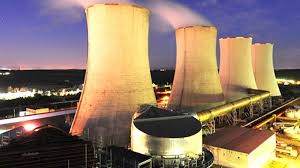50 000 benefit from Hwange unit 7 and 8 expansion spin-offs
THE US$1,5 billion Hwange Thermal Power Station Unit 7 and 8 expansion project in Matabeleland North province has generated immense economic and social spin-offs amid reports that 50 000 people and international entities have directly benefited from the massive project through employment and provision of various supplies.
The project has proved to be a critical economic enabler beyond just increasing power generation as it has boosted several ancillary projects that feed into the ongoing construction works.
On the economic front, it has had a massive impact on suppliers of key materials such as coal production, cement and limestone production, quarry production as well as transport and logistics providers led by the National Railways of Zimbabwe (NRZ). The project’s positive impact dovetails with the Second Republic’s drive to transform Zimbabwe into an upper middle-income economy by 2030.
ZPC is also engaged in the construction of homes under the Relocation Action Plan (RAP), a compensatory housing project for the families whose homes were affected by the new transmission line for the Hwange Expansion Project.
The families had to be moved to pave the way for the transmission line and as a result, a total of 72 houses are set to be built while some have already been handed over to affected families. Tenders for the construction of the houses were awarded to indigenous companies in a move meant to empower them.
On Wednesday, Zimbabwe Power Company (ZPC) handed over the first batch of 29 houses at Hope Fountain, whose sizes ranged from two to four rooms. Each homestead also has separate, spacious kitchen with a thatched roof and a toilet. Detailing the benefits of the project yesterday, ZPC acting managing director, Engineer Norbet Mataruse, said 50 000 people have tapped into one of the Second Republic’s signature projects aimed at boosting power generation to support economic transformation.
“In terms of people who got employed and benefited, I can put it at 50 000,” said Eng Mataruse.
“On the benefits that have accrued to Zimbabweans as a result of this project, it will need months or even a year to narrate because you have thousands employed directly and thousands others indirectly through companies such as suppliers and others contracted to do other works related to the project.”
Another beneficiary of Hwange power station expansion project is the extension of the existing Deka Water Pipeline Project. The US$48,1 million funded project from a line of credit extended by Indian Government, has also created employment for locals and many downstream industries benefited.
Hwange Power Station draws raw water for electricity generation and cooling from the Zambezi River through the Deka pipeline.
The water demand for Unit 7 and 8 is said to be about 1 860 cubic metres per hour and a new 250 000 cubic metres reservoir to complement the existing one has been constructed as part of the expansion project. The project scope includes the construction of a new 42 kilometre pipeline from Deka High Lift pump station to Hwange Power Station.
The Government, through Zesa’s subsidiary, ZPC, is implementing the Hwange Expansion Project, which is set to increase the national electricity supply by 600 megawatts.
Built at a cost of about US$1,5 billion, the Hwange Thermal Power Station Unit 7 and 8 expansion, is one of the Second Republic’s signature projects aimed at boosting power generation.
-chronicle











